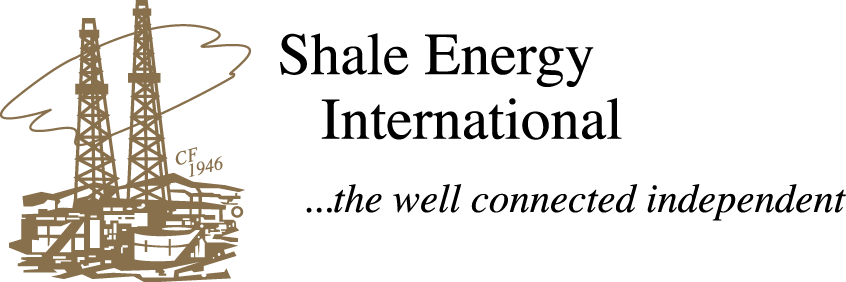To Help You Understand Your Oil And Gas Investment
Associated gas – natural gas produced with crude oil from the same reservoir.
Barrel – a unit of measure for oil and petroleum products that is equivalent to 42 U.S. gallons.
Blowout – the uncontrolled flow of gas, oil or other fluids from a well.
Blowout preventer (BOP) – the equipment installed at the wellhead to control pressures in the annular space between the casing and drill pipe or tubing during drilling, completion, and workover operations. See also Christmas tree.
Brine – see produced water
British thermal unit (BTU) – a measure of the heating value of a fuel
Casing – metal pipe inserted into a wellbore and cemented in place to protect both subsurface formations (such as groundwater) and the wellbore. A surface casing is set first to protect groundwater. The production casing is the last one set. The production tubing (through which hydrocarbons flow to the surface) will be suspended inside the production casing.
Christmas tree – the assembly of valves, pipes, and fittings used to control the flow of oil and gas from a well.
Coiled tubing – a long, small diameter pipe flexible enough to be stored on and deployed from a large, truck-mounted roll. Used to replace jointed pipe in certain types of drilling, completion, and workover operations.
Compressor – an engine used to increase the pressure of natural gas so that it will flow more easily through a pipeline
Development well – a well drilled within the proved area of an oil or gas reservoir to the depth of a stratigraphic horizon known to be productive; a well drilled in a proven field for the purpose of completing the desired spacing pattern of production.
Downhole – a term used to describe tools, equipment, and instruments used in the wellbore, or conditions or techniques applying to the wellbore.
Downstream – when referring to the oil and gas industry, this term indicates the refining and marketing sectors of the industry. More generically, the term can be used to refer to any step further along in the process.
Drill cuttings – the small pieces of rock created as a drill bit moves through underground formations while drilling.
Dry gas – the volume of gas remaining after all water and natural gas liquids have been removed.
Dry hole – any exploratory or development well that does not find commercial quantities of hydrocarbons.
E&P – Exploration and production. The “upstream” sector of the oil and gas industry.
Enhanced oil recovery (EOR) – refers to a variety of processes to increase the amount of oil removed from a reservoir, typically by injecting a liquid (e.g., water, surfactant) or gas (e.g., nitrogen, carbon dioxide).
Exploratory well – a hole drilled: a) to find and produce oil or gas in an area previously considered unproductive area; b) to find a new reservoir in a known field, i.e., one previously producing oil and gas from another reservoir, or c) to extend the limit of a known oil or gas reservoir.
Field – An area consisting of a single reservoir or multiple reservoirs all grouped on, or related to, the same individual geological structural feature or stratigraphic condition. The field name refers to the surface area, although it may refer to both the surface and the underground productive formations.
Formation damage – the reduction in permeability in reservoir rock due to the infiltration of drilling or treating fluids into the area adjacent to the wellbore.
Fracturing – the application of hydraulic pressure to the reservoir formation to create fractures through which oil or gas may move to the wellbore.
Gas-to-Liquids (GTL) – the conversion of natural gas to a liquid form so that it can be transported easily. Typically, the liquid is converted back to natural gas prior to consumption.
Gravity – a standard adopted by the American Petroleum Institute for measuring the density of a liquid. Gravity is expressed in degrees with lower numbers indicating heavier liquids and higher numbers indicating lighter liquids.
Integrated – when applied to an oil company, it indicates a firm that operates in both the upstream and downstream sectors (from exploration through refining and marketing)
Lease – a legal document conveying the right to drill for oil and gas, or the tract of land on which a lease has been obtained where the producing wells and production equipment are located.
Lifting costs – the cost of producing oil from a well or lease.
Log – to conduct a survey inside a borehole to gather information about the subsurface formations; the results of such a survey. Logs typically consist of several curves on a long grid that describe properties within the wellbore or surrounding formations that can be interpreted to provide information about the location of oil, gas, and water. Also called well logs, borehole logs, wireline logs.
Midstream – a term sometimes used to refer to those industry activities that fall between exploration and production (upstream) and refining and marketing (downstream). The term is most often applied to pipeline transportation of crude oil and natural gas.
Natural gas liquids (NGL) – the portions of gas from a reservoir that are liquified at the surface in separators, field facilities, or gas processing plants. NGL from gas processing plants is also called liquified petroleum gas (LPG).
Non-associated gas – natural gas produced from a reservoir that does not contain significant quantities of crude oil.
P&A (plugged and abandoned) – a depleted well or dry hole that has been (typically) filled with cement and marked, with all surface equipment removed.
Permeability – a measure of the ability of a rock to transmit fluid through pore spaces.
Porosity – a ratio between the volume of the pore space in reservoir rock and the total bulk volume of the rock. The pore space determines the amount of space available for storage of fluids.
Produced water – the water extracted from the subsurface with oil and gas. It may include water from the reservoir, water that has been injected into the formation, and any chemicals added during the production/treatment process. Produced water is also called “brine” (and may contain high mineral or salt content) or “formation water.” Some produced water is quite fresh and may be used for livestock watering or irrigation (where allowed by law).
Royalty – a percentage interest in the value of production from a lease that is retained and paid to the mineral rights owner.
Separation – the process of separating liquid and gas hydrocarbons and water. This is typically accomplished in a pressure vessel at the surface, but newer technologies allow separation to occur in the wellbore under certain conditions.
Shut in – to close valves on a well so that it stops production, or a well on which the valves have been closed.
Sour crude oil – oil containing free sulfur or other sulfur compounds whose total sulfur content is in excess of 1 percent.
Sour gas – natural gas containing hydrogen sulfide.
Spacing – the distance between wells producing from the same reservoir. Spacing is often expressed in terms of acres, e.g., 40-acre spacing, and is often established by regulatory agencies.
Stimulation – the term used for several processes to enlarge old channels, or create new ones, in the producing formation of a well designed to enhance production. Examples include acidizing and fracturing.
Underbalanced drilling – drilling under conditions where the pressure being exerted inside the wellbore (from the drilling fluids) is less than the pressure of the oil or gas in the formation.
Underground injection – the placement of gases or fluids into an underground reservoir through a wellbore. May be used as part of enhanced oil recovery or waterflooding processes or for disposal of produced water.
Upstream – the exploration and production portions of the oil and gas industry.
Waterflooding – the injection of water into an oil reservoir to “push” additional oil out of the reservoir rock and into the wellbores of producing wells.
Wellhead – the equipment at the surface of a well used to control the pressure; the point at which the hydrocarbons and water exit the ground
Well servicing – maintenance work performed on an oil or gas well to improve or maintain the production.
Wet gas – natural gas containing significant amounts of liquifiable hydrocarbons.
Wildcat well – a well drilled in an area where no current oil or gas production exists. Also called a “rank wildcat.”
Workover – operations on a producing well to restore or increase production. A workover may be performed to stimulate the well, remove sand or wax from the wellbore, to mechanically repair the well, or for other reasons.
WTI – West Texas Intermediate, a type of crude oil commonly used as a price benchmark.


